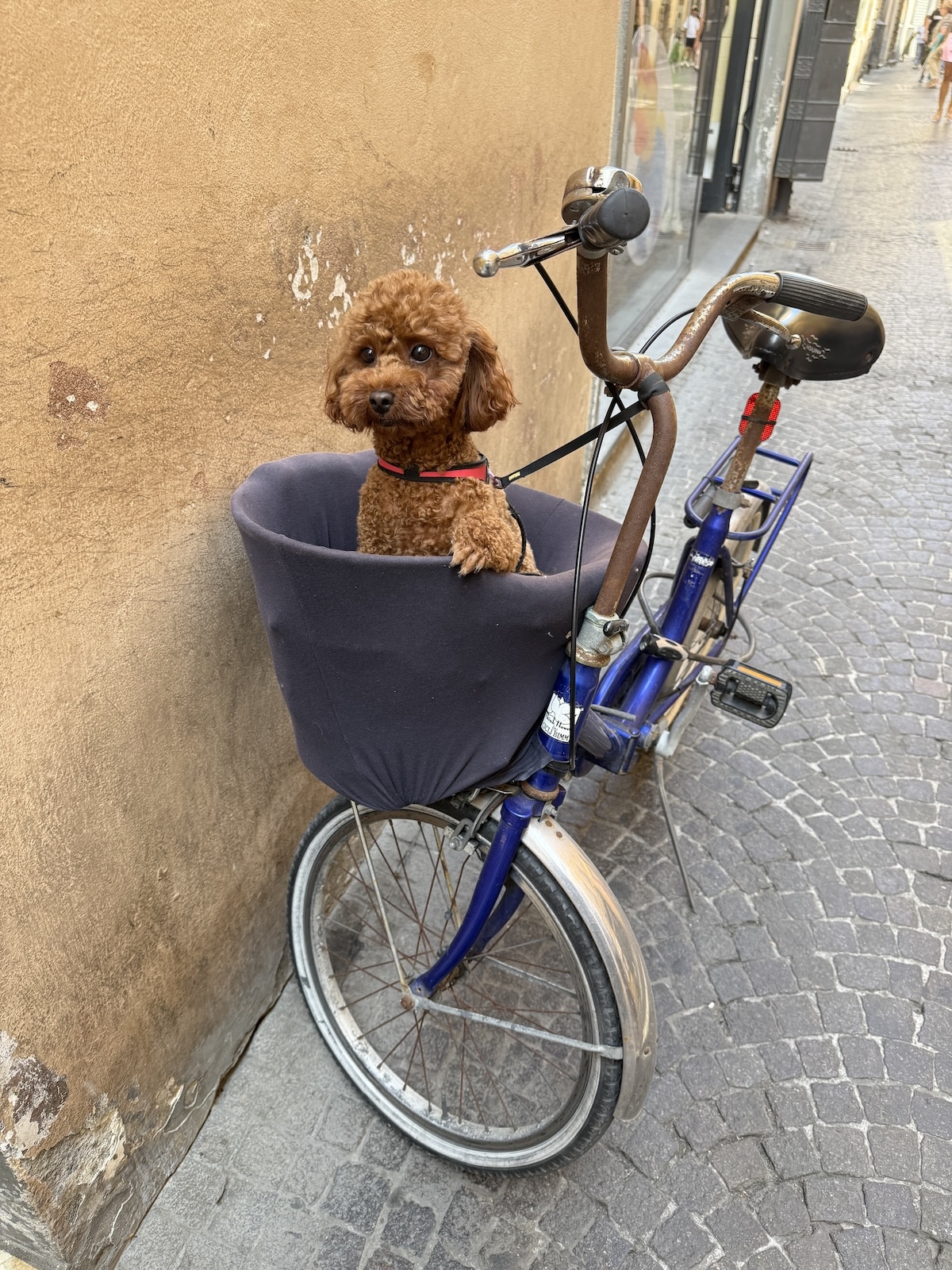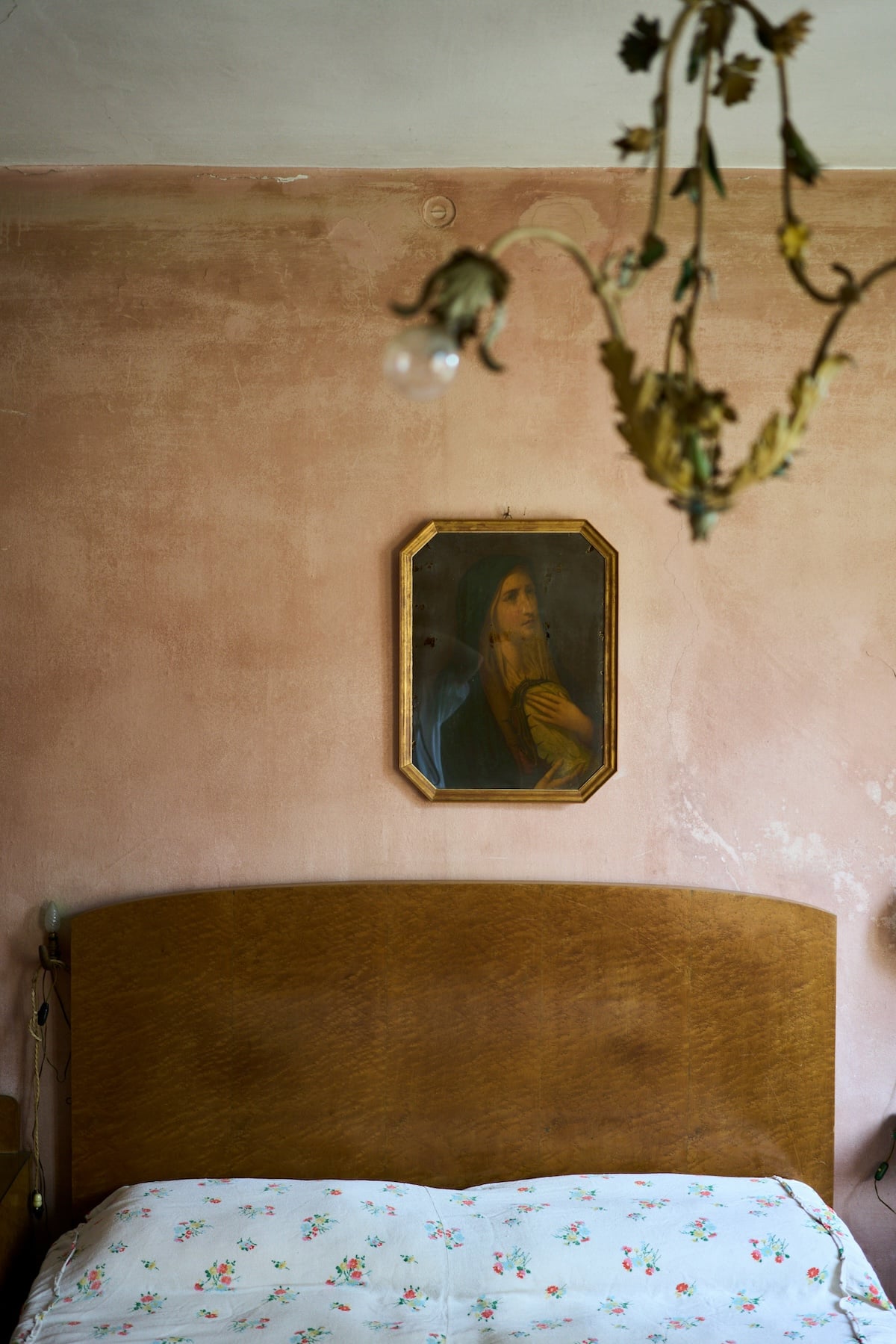
Flying economy to Europe isn’t glamorous. Your tailbone goes numb around hour three. The cabin lights flicker on at random intervals. Someone’s elbow invades your armrest territory while a baby screams two rows back.
Most of us aren’t booking business class for transatlantic flights. We’re in the back, knees pressed against the seat in front of us, trying to make ten hours bearable.
I fly round trip to Italy at least four times per year. These nine items have become non-negotiable. They don’t turn economy into first class, but they transform a grueling flight into something manageable—even restful.
I use every item on this list on my own flights to Italy. This post contains affiliate links—if you purchase through them, I earn a small commission at no additional cost to you.
Jump to the list: Visit the shop
The Foundation: Comfort Basics
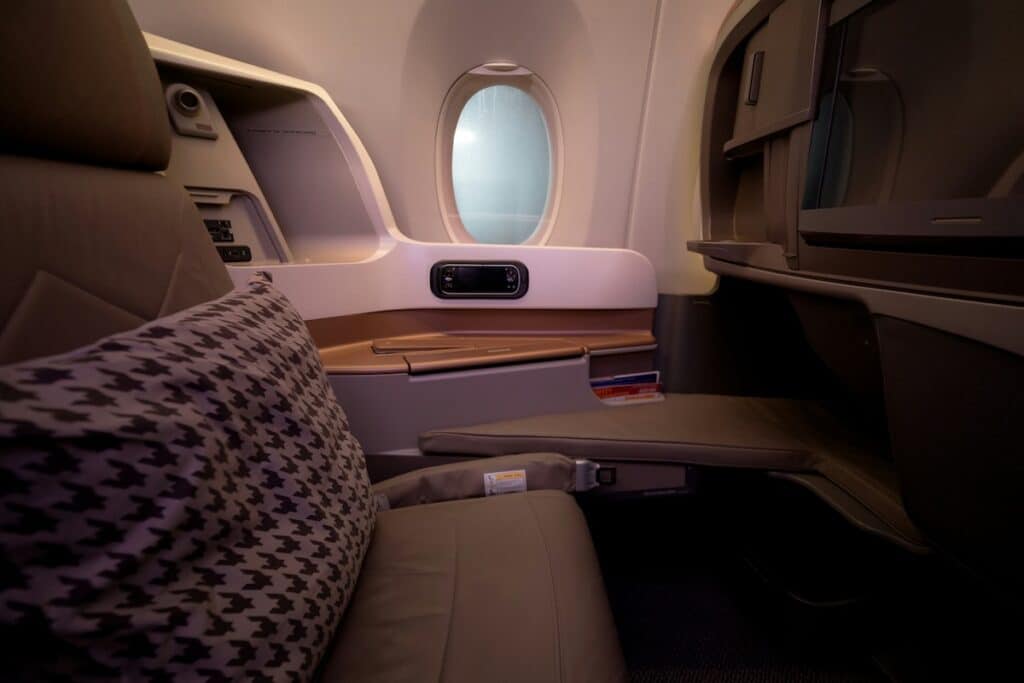
Compression Socks
DVT (deep vein thrombosis) isn’t just a concern for elderly passengers. Blood clots can happen to anyone sitting immobile for hours at 35,000 feet. Compression socks keep blood flowing in your legs and reduce the ankle swelling that makes your shoes feel two sizes too small by landing.
Put them on before you leave for the airport. They work best when worn for the entire journey, not halfway through when your feet already feel like balloons. These are the ones I use on every flight.
Seat Cushion
Airplane seats weren’t designed for human comfort. The thin padding compresses within the first hour, leaving you sitting on what feels like plywood wrapped in fabric. Your tailbone takes the brunt of it.
A memory foam seat cushion is the first thing I pull from my bag when I reach my seat. It adds actual padding between you and that unforgiving surface. The difference is immediate—your lower back and hips will thank you around hour five when everyone else is shifting uncomfortably.
This one is portable enough and thick enough to matter. After ten hours, that matters more than you’d think.
NOTE: When you first get the cushion, it might feel firm. Once you sit on it and it warms up, it softens, and the comfort gets better the more you use it. Break it in before your flight. I use mine at home on my office chair and even on the couch when I watch TV.
Airplane Footrest
Sitting with your legs at a 90-degree angle or your feet dangling with nowhere to go for hours compresses your spine, cuts off circulation, and causes lower back pain.
This footrest straps to your tray table and elevates your feet. The change in position takes pressure off your lower back and keeps blood flowing to your legs. I set it up immediately after the seat cushion—it’s part of my seat setup routine before we even push back from the gate.
Small adjustment, significant impact.
Sleep Arsenal
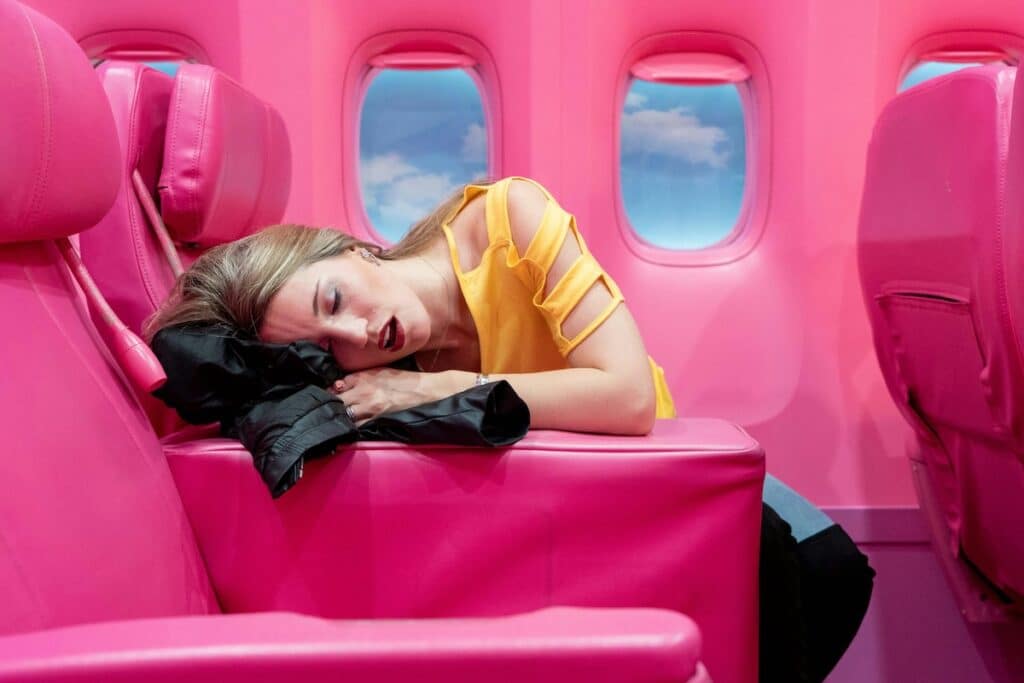
Travel Neck Pillow
Most neck pillows are too soft or shaped wrong. They compress under the weight of your head, leaving your neck bent at an awkward angle, and you wake up with a crick in your neck.
This one actually supports your head and neck. The difference between dozing and real sleep on a plane comes down to whether your neck stays aligned with your spine. When your head isn’t lolling forward or sideways every twenty minutes, you can sleep for more than fifteen-minute intervals.
I keep it in my nylon bag under the seat until I’m ready to sleep. No need to wear it through boarding like a tourist billboard.
Eye Mask
Cabin lights don’t follow a logical schedule. They flicker on for meal service, then again when someone needs the bathroom. Add in the glow from other passengers’ screens and the sunrise that hits at 4 a.m. over the Atlantic, and you’re never in complete darkness.
An eye mask blocks all of it. Complete darkness signals your brain that it’s time to sleep, not time to half-doze while squinting against someone’s iPad three rows up.
This one is lightweight and takes up almost no space in the bag. It stays there with the neck pillow until you need it.
Melatonin
Melatonin won’t knock you out like a sleeping pill. It helps your body recognize that it’s time to sleep, even when your circadian rhythm is confused by crossing six time zones.
I take it just before the meal service. By the time the trays are cleared and the cabin lights dim, I’m ready to sleep. The goal isn’t to be unconscious for the entire flight—it’s to get quality rest so you land refreshed instead of groggy and disoriented.
Keep it in your purse or pocket. You need it accessible when the meal cart comes around, not buried in the bag under the seat. This is the melatonin I use for every trip (and it’s helps me adjust my sleeping hapbits the first couple nights in Italy too).
Sensory Control

Noise-Cancelling Headphones
Airplane noise is relentless. The engine hum, the air circulation system, crying babies, chatty neighbors—it layers into a constant assault on your ears.
Noise-cancelling headphones serve two purposes. First, they let you actually hear the inflight entertainment system without cranking the volume to damaging levels. Second, you can wear them with nothing playing and cut out most of the cabin noise. That silence is worth its weight in gold around hour seven.
I put mine around my neck just before boarding. They’re too bulky for the purse and too valuable to stuff in the overhead bin.
Bluetooth Adapter for Airplane
Most planes still use wired headphone jacks for their entertainment systems. If you want to use your wireless headphones, you need an adapter that plugs into the seat and connects via Bluetooth.
This small device solves that problem. I keep it in my purse with the melatonin—it’s tiny and needs to be accessible. As soon as I’m settled in my seat, I plug it into the entertainment system and pair my headphones.
Done. Small item, massive convenience upgrade.
TIP: When you’re on the plane and ready to sync your headphones to the bluetooth adapter, make sure to shut off the bluetooth connectivity on your phone. If you don’t headphones will keep trying to connect to your phone and you will have trouble getting the headphones to stay connected to the transmitter.
The Carry System

Lightweight Nylon Bag
Everything goes in this bag—nothing in my carry-on. It holds everything (except the bluetooth adapter and the melatonin that I choose to leave in my purse for easy access).
The cushion, footrest, neck pillow, and eye mask all fit inside. It folds down to almost nothing and weighs practically zero.
I sling it over my shoulder or attach it to my luggage handle walking through the airport. On the plane, it slides under the seat in front of me and takes up minimal space at my feet.
No overhead bin needed. No digging through a stuffed carry-on mid-flight. Everything I need is within arm’s reach.
My Exact Packing & Setup Strategy
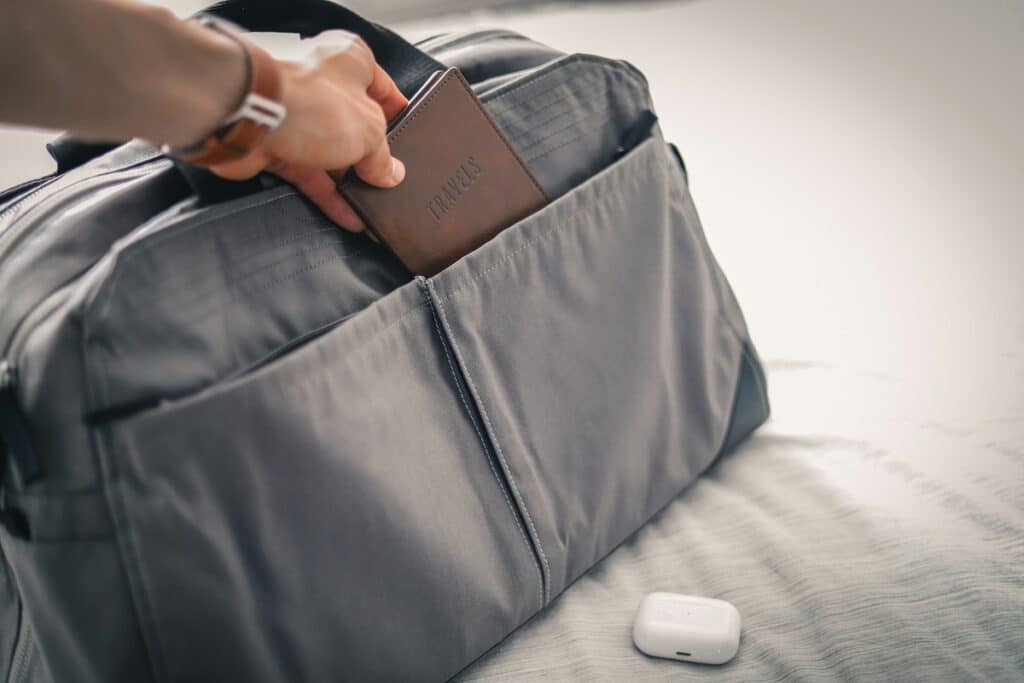
Before the airport: Compression socks go on. They need to be working from the start, not added later.
Just before boarding: Headphones around my neck. They’re ready to use the moment I sit down.
In the nylon bag: Cushion, footrest, neck pillow, eye mask. Everything that makes the seat livable.
In my purse: Melatonin and Bluetooth adapter. Both are small and need to be accessible quickly.
At my seat—immediate setup:
I pull out the cushion first and place it on the seat before I even sit down. Then I set up the footrest on the tray table. Next, I connect the Bluetooth adapter to the entertainment system and pair my headphones. The nylon bag goes under the seat in front of me. The neck pillow and eye mask stay in the bag until I’m ready to sleep.
Total space used: zero overhead, minimal under-seat footprint.
The entire system is grab-and-go. No fumbling, no forgetting something in the overhead bin, no bothering my seatmate to get up so I can dig through my bag.
Final Thoughts
This kit isn’t expensive relative to what you spend on flights to Europe. But the value compounds over years of travel. Comfort, sleep, and arriving without feeling like you’ve been beaten up—that’s worth the investment.
These aren’t luxuries. After four-plus round trips to Italy per year, this kit is non-negotiable. The flight is part of the journey. Make it bearable.


